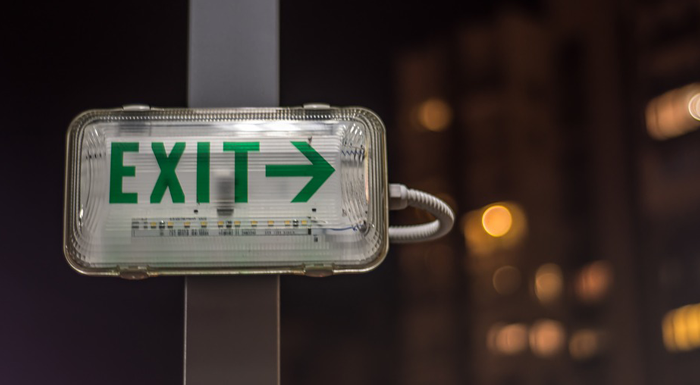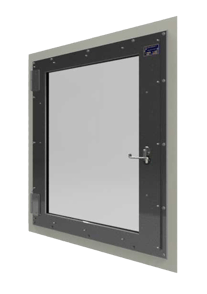
On offshore platforms, whether it is a floating or a fixed platform, installing the right architectural components that provide safety against fire and explosions is of key importance. On onshore platforms, evacuation might seem easier since the structure is already on land, so people can get away more efficiently and firefighters can  access the structure more rapidly. Unfortunately, this is different for offshore structures where operations take place between shallow or ultra-deep waters.
access the structure more rapidly. Unfortunately, this is different for offshore structures where operations take place between shallow or ultra-deep waters.
Fire and blast rated escape hatches provide the right solution in such cases. Because of the challenges of the offshore industry, the rules and regulations for escape hatches are very strict. The most important feature of an escape hatch is to ensure safe evacuation during fire and blast hazards. Next to this, they maintain the wellbeing and health of personnel by allowing more natural light into the structure.
In this article, I will discuss the importance of escape hatches on offshore oil and gas structures.
An escape hatch provides for safe evacuation in the offshore structure
There are a lot of different scenarios to think about and thoroughly consider when managing the risk of fire outbreaks on an offshore platform. Escape hatches are of life-saving importance in such structures. Like regular windows, they allow more natural light into cabins yet at the same time provide a safe escape route for personnel in case of fire.
Regular windows on offshore platforms cannot be opened in order to maintain safety. Escape hatches can be opened, but should only be used during emergencies. These hatches ensure extra safety when doors fail to operate during fire events and/or explosions. Therefore, it is important that the clear opening of the hatch is big enough for people to pass through to be evacuated safely. The recommendation in this regard is a maximum clear opening of 1.000 x 1.000 mm.
An escape hatch allows for more natural light inside the offshore structure
Safety against fire and explosion is the number one priority when it comes to personnel safety. However, the well-being and health of the workers are also equally important. During the risk analysis and design phase of the project, the health risks of personnel also needs to be taken into consideration. The health risks for personnel offshore is, among others, hearing loss, sleep problems, and depressive illness.
According to a study based on the effects of natural light on workers by the scholars Marqueze et al. (2015): ‘natural light exposure during work days was shown to be associated with the perception of insufficient sleep. Workers at high latitudes have a higher chance to develop depression than workers living near the Equator. These findings suggest that the association between natural light exposure and sleep- and emotion-related issues should be seriously considered along with other psychological factors influencing sleep and mental health.’ This is one of the reasons why windows are so important for offshore workers. The more natural light is allowed in the better people sleep and the less the chance for depressive illnesses.
Conclusion
Escape hatches provide enhanced safety for personnel on offshore oil and gas structures. When doors fail to operate during fire and explosion hazards, escape hatches allows for evacuation and safety. These hatches not only maintain the safety of personnel but also the wellbeing by allowing in natural light. Therefore, during the risk analysis and design stage of each project, it is of key importance to consider the need for escape hatches in combination with fire and blast rated doors and walls.
Want to know more about the specifications for escape hatches? Take a look at our innovative new escape hatch here.
Marqueze E.C., Vasconcelos S., Garefelt J., Skene D.J., Moreno C.R., Lowden A. (2015). Natural light exposure, sleep and depression among day workers and shiftworkers at Arctic and Equatorial latitudes. PLOS ONE 10(4).





